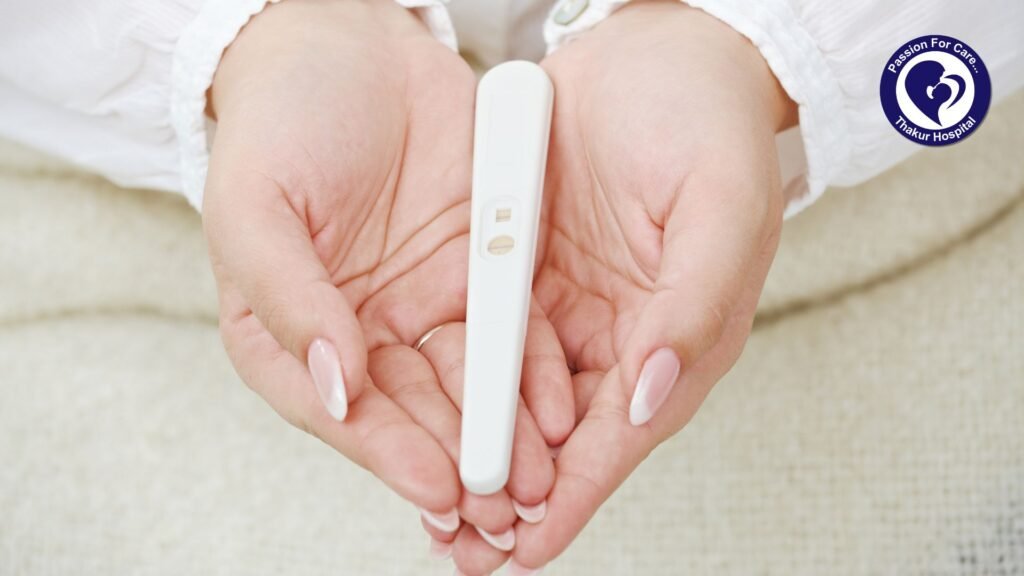Are you a Woman Struggling to Conceive Despite Having Regular Menstrual Cycles? Many women find it difficult to conceive even though they have regular menstrual periods. This issue can raise from various known and unknown medical conditions, but one of the most misunderstood reasons is a lack of knowledge. Improper planning and misconceptions about fertility can hinder conception efforts.
There’s one common misconception that successful sexual intercourse will automatically lead to pregnancy. However, this is not always the case. While intercourse is essential for conception, several other critical factors must be considered.
What Should Couples Know About the Menstrual Cycle and Fertility?
Many couples have an incomplete understanding of the menstrual cycle and the optimal times for fertility. For those planning to start a family, it is crucial to know when a woman is most fertile. This period, known as the “fertile window,” is the best time for conception. Understanding and identifying this window can significantly increase the chances of pregnancy.
So let’s understand
What is a fertile window?
The right time of intercourse for successful conception can be determined by the comprehension of the fertile window of the female. The fertile window refers to those days of the menstrual cycle when there are high chances of conception. The fertile window is mostly the span of a total of five days, before and after ovulation. Oozing out of the eggs from the ovary is termed ovulation. If the couple performs intercourse during these five days, the possibility of conception increases although there is no certainty.
How to calculate your ovulation day to discover your fertile window?
The ovulation day is not the same for every woman, it depends on the length of the menstrual cycle. A healthy menstrual cycle ranges between 24 days to 35 days. Normally, the 14th day of the menstrual cycle is said to be the ovulating day but it is not universal. You must know that the menstrual cycle is not only those days when you are bleeding. Let’s have an accurate understanding of it.
The very first day of your bleeding marks the onset of a menstrual cycle, it is called the first day. Most women bleed for 5 days, some may exceed up to 7 days. From day 1 of your period to day 1 of the next period is your menstrual cycle. In one cycle ovulation is supposed to happen on day 14th but it depends on the length of your cycle.
If a woman has a cycle of 24 days, the 10th day could be her ovulation day. She’s most fertile from the 7th day to the 11th day. If the cycle ends in 28 days, the 14th day is her ovulation day. Her fertile window is the 11th to 15th day. For a woman with 35 days of the cycle, she is most fertile from the 18th day to 22nd day of the menstrual cycle.
One must know her last period to calculate your ovulation day also known as best days to get pregnant. Smartphones can also help, by inputting your basic information and it will help you with calculation and you can set reminders. You can purchase an ovulation predictor kit from a pharmacy. It is very easy to use.
Physiology of menstrual cycle and conception
Menstrual cycle length varies in different women but the physiology is the same in all. The menstrual cycle can be divided into two phases: the follicular phase and the luteal phase.
During the follicular phase, an egg develops and grows inside the ovary. It starts at the onset of flow and lasts on the day when an egg is released from the ovary. This phase also includes the preparation of the uterus for pregnancy followed by the luteal phase.
The luteal phase expands from the day of ovulation to the first day of the next menstrual cycle. This phase is generally 14 to 17 days long, depending upon the duration of a cycle. During this phase, if the egg goes unfertilized, it starts degrading.
For conception, fertilization of the egg by sperm is required. After fertilization, the egg grows into an embryo and later develops into a fetus. The technique requires perfect timing because sperms can live inside the female body only for five days. Ov,a released from the ovary is capable of fertilization only for 24 hours post-release. Knowing your fertile window is helpful to maximize the conception odds. Although, this method is not supported for women who have irregular or delayed periods. Such women can take the help of an ovulation prediction kit. The best method is to get involved in intercourse at the interval of 2 days, the life span of sperm will be helpful.
Conclusion
It is quite unlikely that a woman conceives on her first try. Pregnancy planning requires a calculative approach. You must be aware of your fertile period and probable day of ovulation. Change in appearance of cervical mucus is indicative of approaching ovulation time. During the fertile period, cervical mucus is thick and milky in color. It facilitates the sperm motility to reach up to the egg. Intercourse in fertile window time maximizes the chances of pregnancy.
Don’t struggle to calculate the best days to get pregnant. Take control of your fertility journey today by consulting with Dr Geetanjali Thakur, Karnal’s best gynaecologist near you. Get the knowledge and guidance you need to understand your menstrual cycle, identify your fertile window, and increase your chances of conception. Book your appointment now with the best gynaecologist in karnal and start your path towards parenthood.



